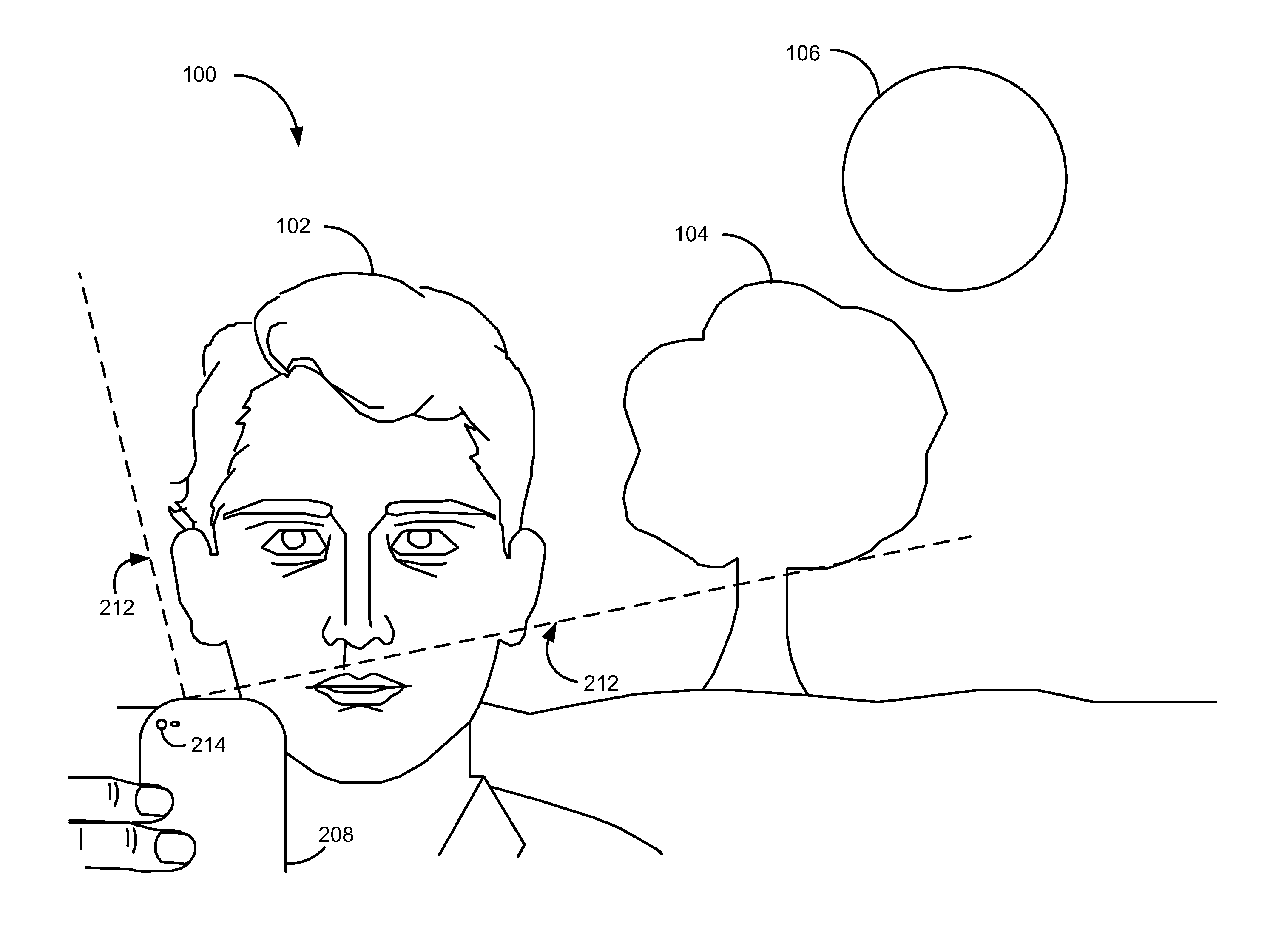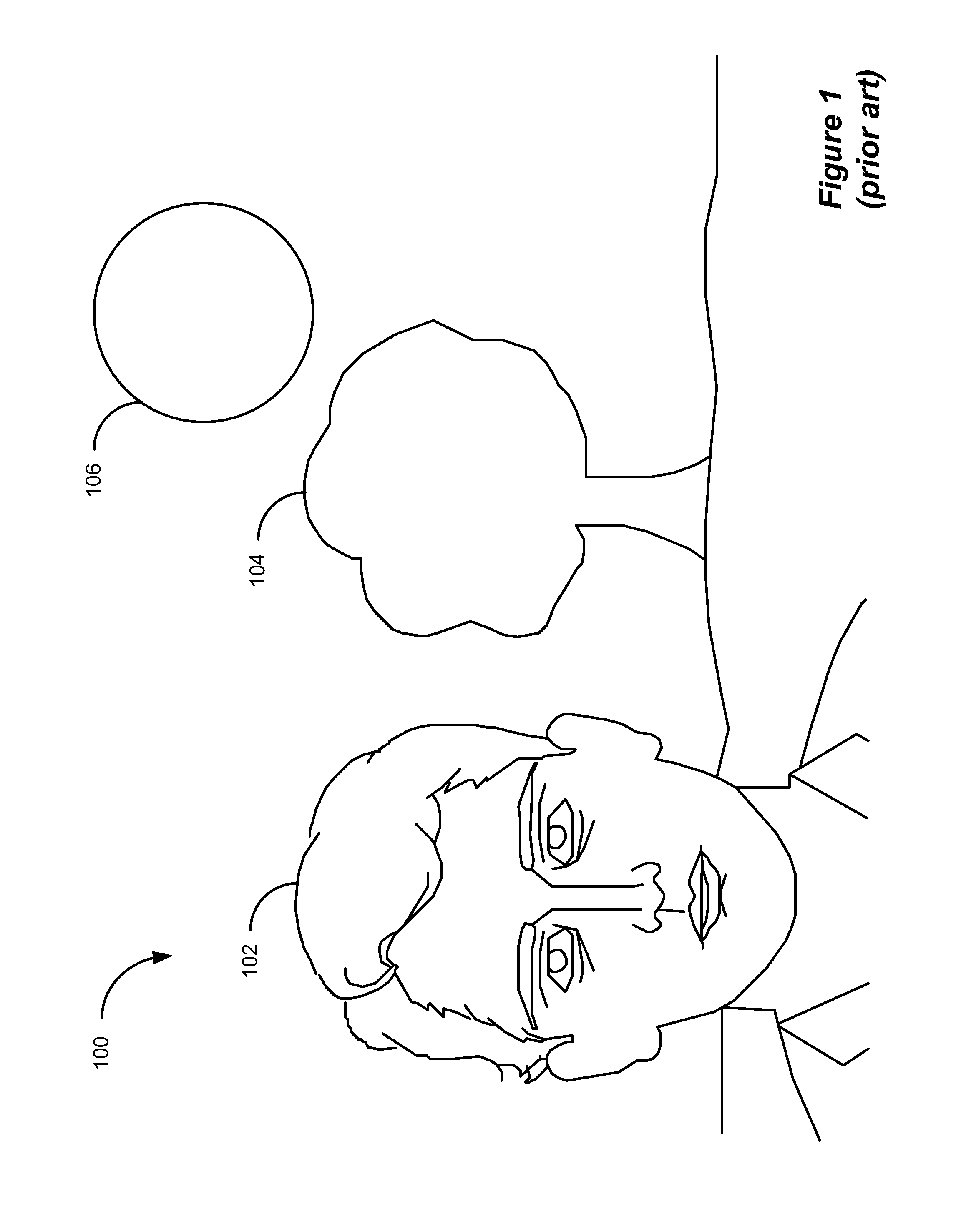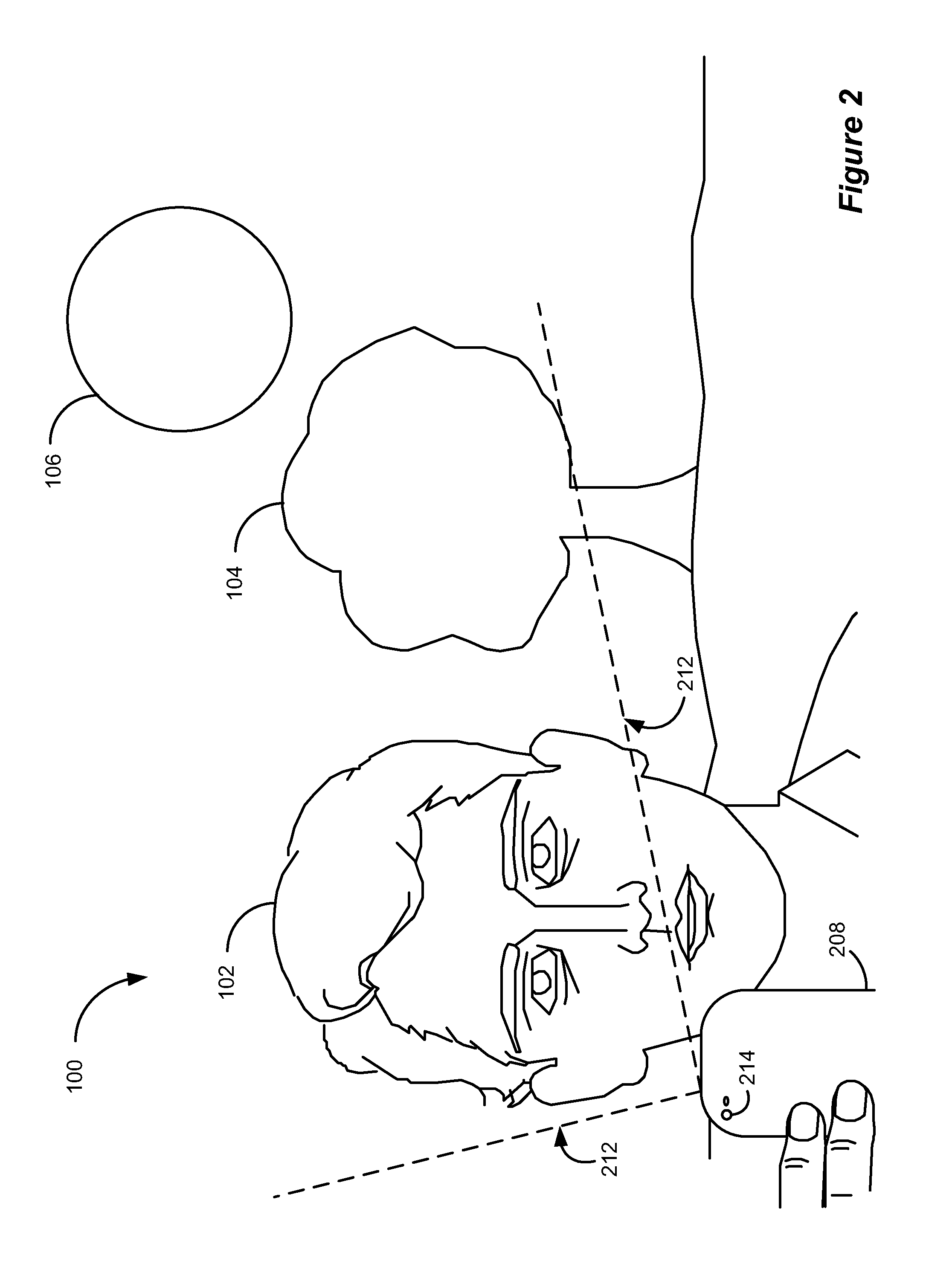Auto Exposure Techniques for Variable Lighting Conditions
a technology of variable lighting conditions and exposure techniques, applied in the direction of exposure control, instruments, television systems, etc., can solve the problems of poor quality video streams over a large number of frames, difficult trade-off between adjusting exposure parameter values too frequently, etc., to achieve fast ae convergence speed, reduce oscillations, and keep exposure stable
- Summary
- Abstract
- Description
- Claims
- Application Information
AI Technical Summary
Benefits of technology
Problems solved by technology
Method used
Image
Examples
Embodiment Construction
[0023]This disclosure pertains to systems, methods and a computer readable medium for intelligently and dynamically setting a digital video camera's exposure parameters in such a way as to lead to visually pleasing images and efficiently encoded video streams in handheld and / or mobile videoconferencing applications, especially in scenes with variable lighting conditions. While this disclosure discusses new techniques for AE in handheld and / or mobile videoconferencing applications, one of ordinary skill in the art would recognize that the techniques disclosed may also be applied to other contexts and applications as well. The techniques disclosed herein are applicable to any number of electronic devices with digital image sensors, such as digital cameras, digital video cameras, mobile phones, personal data assistants (PDAs), portable music players, computers, and conventional cameras. An embedded processor, such a Cortex® A8 with the ARM® v7-A architecture, provides a versatile and r...
PUM
 Login to View More
Login to View More Abstract
Description
Claims
Application Information
 Login to View More
Login to View More - R&D
- Intellectual Property
- Life Sciences
- Materials
- Tech Scout
- Unparalleled Data Quality
- Higher Quality Content
- 60% Fewer Hallucinations
Browse by: Latest US Patents, China's latest patents, Technical Efficacy Thesaurus, Application Domain, Technology Topic, Popular Technical Reports.
© 2025 PatSnap. All rights reserved.Legal|Privacy policy|Modern Slavery Act Transparency Statement|Sitemap|About US| Contact US: help@patsnap.com



